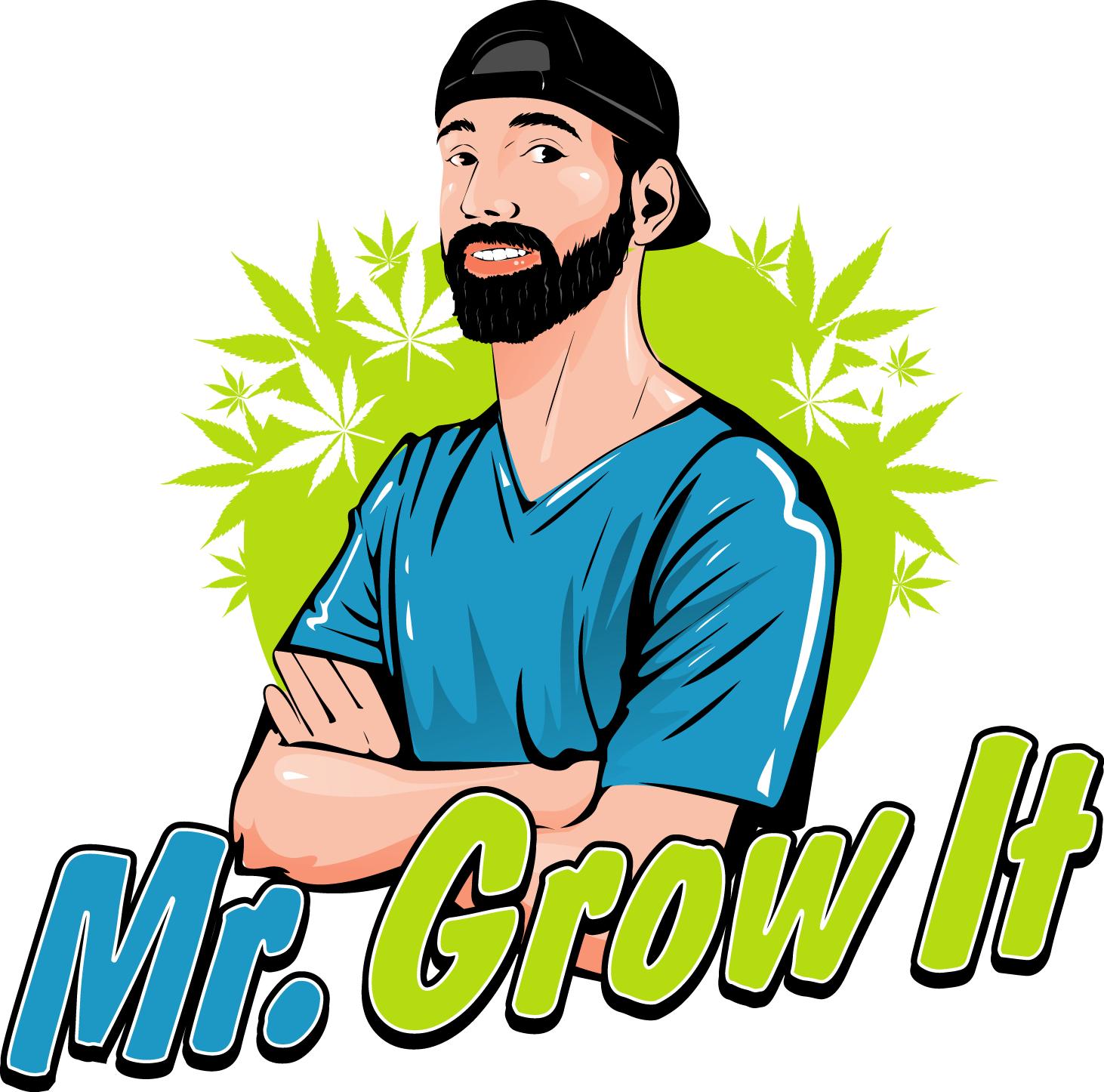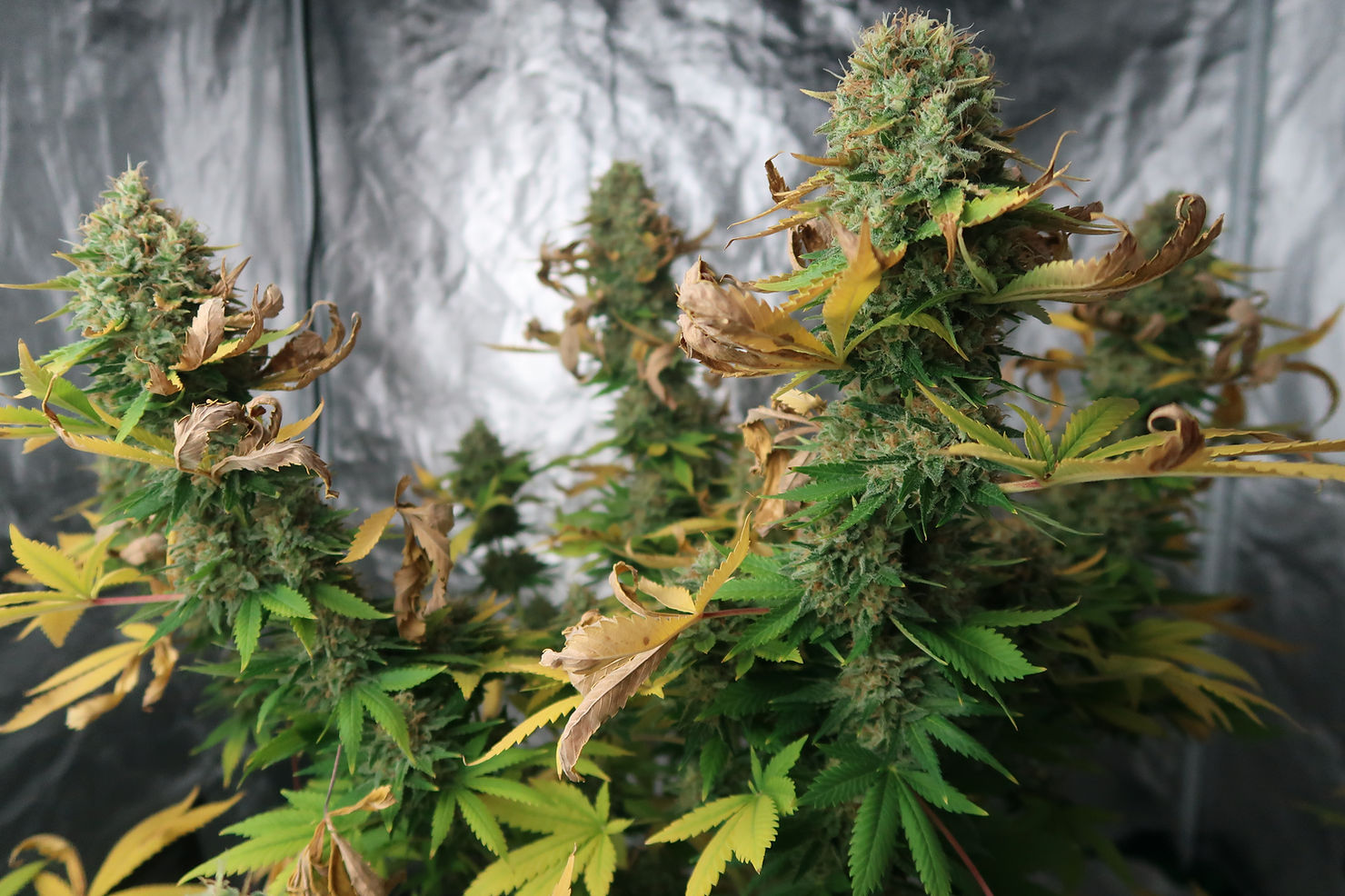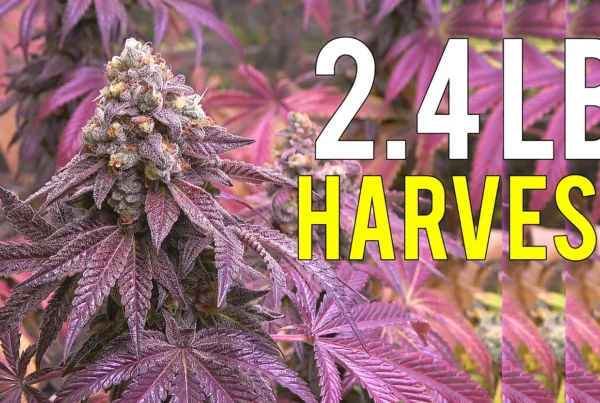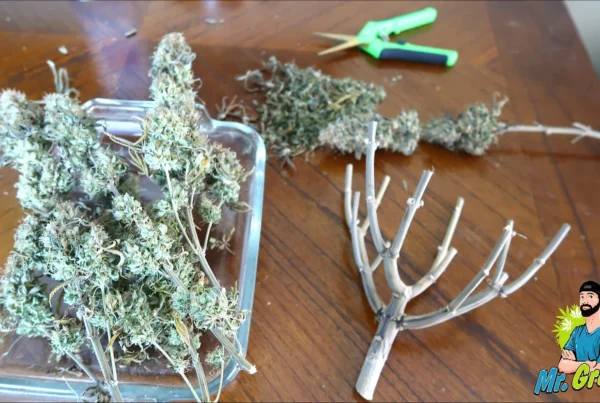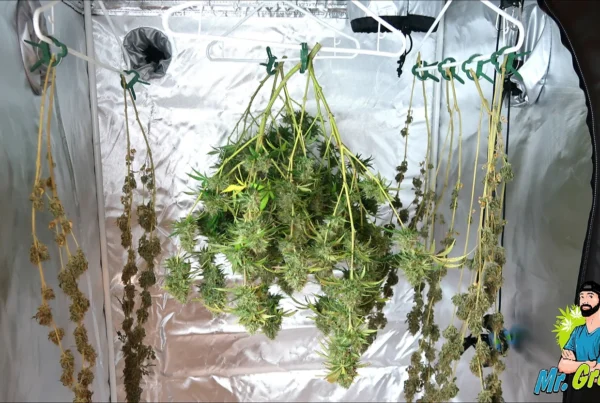At this point, you’ve been caring for your cannabis plant for months, and it’s almost time to enjoy the rewards of all your hard work. First, you’re going to want to figure out the optimal time to harvest your plant.
One of the first places most growers check for optimal harvest range is the breeder’s recommendation. This information is typically found on the individual breeder’s website. This recommendation may help give you a general idea, but shouldn’t be solely relied upon when making such a crucial decision.
Since there are usually multiple phenotypes of a specific strain, you’re going to want to rely on some of the signals that your specific plant will start to present to you to indicate she is ready for harvest.

As you get closer to harvest, the pistils (these look like hair) on your plant will begin to change from white to more of a burnt orange color. They will also go from sticking straight out of the flowers to curling and appearing to recede. Using this method, the optimal time to harvest is when 50%-70% of the pistils have changed color and curled. In addition to the breeder’s recommendation and monitoring the pistils, an even more accurate way to help determine if it is time for harvest is to use a magnifying device to observe the plant’s trichomes. This is the method recommended by most growers.
When using a magnifying device such as a Jeweler’s Loupe, handheld magnifier, or a digital microscope, it is easy to determine how ripe your plant is. Before the plant is ready to harvest, the heads of the trichomes (which look like tiny mushrooms) will be clear. As the plant is ready for harvest, they will get cloudy, presenting a milky color. Once they start ripening past that point, the trichomes will turn to an amber color.
Many growers aim to harvest their crop when the trichomes are mostly cloudy (about 70%), with just a small number of the trichomes turning amber. This is when THC content is typically at its highest.
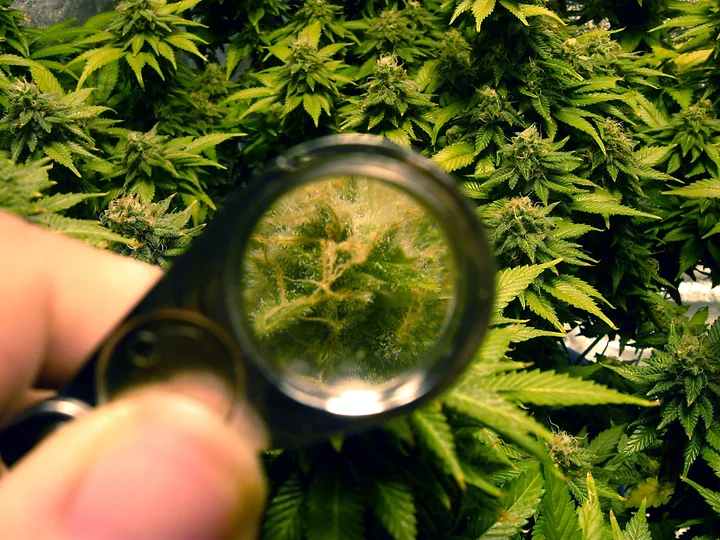
Trichomes towards the top of the plant often ripen before the lower parts of the plant. Some growers choose to harvest their plant all at once, and others split up the harvest in an attempt to maximize potency throughout the plant.
It’s important to note the differences in color, because utilizing this method will also allow you to directly affect the type of high that you receive from your plant. Plants harvested slightly early, when some trichomes are cloudy but most are still clear, tend to have a more cerebral and ‘heady’ high. Plants harvested later, when the trichomes are mostly amber, will have more of a stoney, narcotic, ‘couch lock’ type of high. This is because the THC has begun to degrade into CBN. It is important to note that as THC degrades into CBN, the THC potency of your buds will be reduced.
You can use this information to do things like maximizing THC %, keeping an indica from being too stoney of a high, or keeping a sativa from being a little too heady/cerebral.
Growers develop their own preference as to the perfect time to harvest. The above information will simply help you identify the differing points of ripeness, and help you make the best decision for your particular grow.
Products shown/mentioned in this article: Loupe– http://amzn.to/2qI61pR
Handheld Magnifier– http://amzn.to/2ruJu0V
Digital Microscope– http://amzn.to/2qSD76G
NEXT: Best Magnification Devices for Inspecting Your Plants!
![]()
